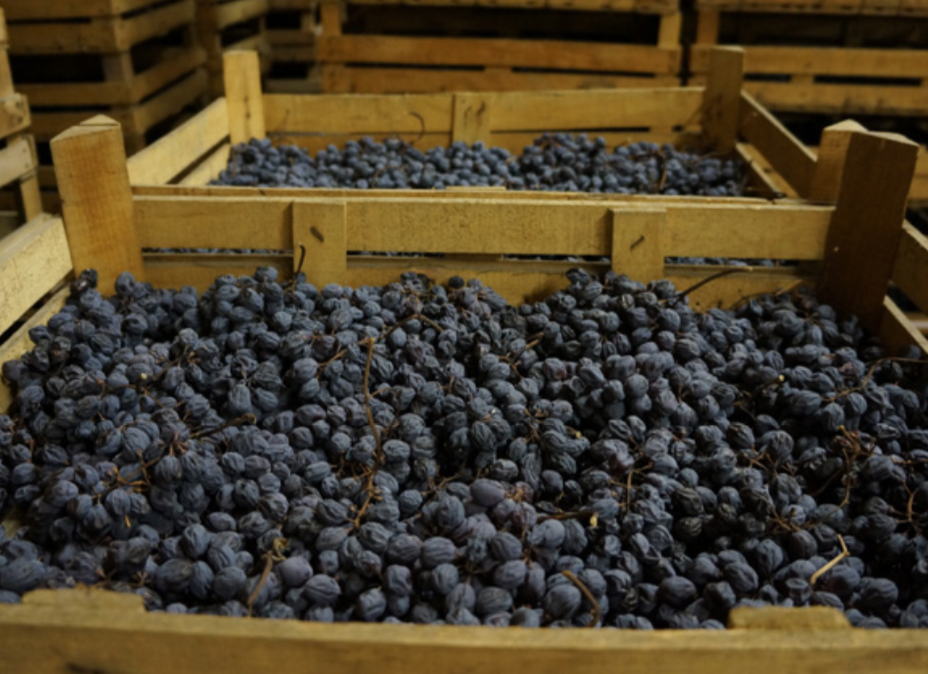I am always happy to trade warm summer winds for the refreshingly cooler air of autumn. That change often induces a change in wine selections, too. Heartier reds are replacing summer whites and roses …and that really makes me happy.
It’s amazing to me that in all the years I’ve been writing this column, I have never written specifically about one of my very favorite wines — Amarone della Valpolicella. When I start to braise food again in the fall, out comes the Amarone, though sparingly as it is not inexpensive. Amarone is made in only one place in the world and with grapes that are rarely seen outside of the region of Valpolicella, which is located in the northeast of Italy just outside of the enchanting and romantic town of Verona (home of Romeo and Juliet). The main grapes in this glorious wine are like little-known movie stars; Corvina — which is by far the most important variety and up to 90% of the blend — along with Rondinella, Corvinone and Molinera round out the thespians of the Amarone roadshow. The process for making these hedonistic delights is as distinctive as a three-legged dog and about as lovable. The same grapes produce basic Valpolicella Classico (and Superiore) which is as good a simple quaffer as you can find anywhere and is like dime store candy for the wine world. I call them simple “bowl of spaghetti wines” and an excellent, inexpensive choice to order in restaurants.
The grapes that will become Amarone are harvested around the first two weeks of October, which is not unlike those in most vineyards in the northern hemisphere, but that’s where the similarity ends. Once harvested, the grapes are then put onto straw mats in small wooden boxes and stacked traditionally in open-sided buildings that encourage air flow through the winter. It is important to note that virtually any other grape variety would quickly rot under these circumstances, leaving nothing more than perhaps an excellent compost. That is what makes these grapes and the area so unique. After about 120 days of partially drying out, they are then pressed! (Remember, we are now in late January or February). With the dehydration of the grapes, which have now lost at least 40% of their water, comes an intense, highly concentrated liquid with a very low yield. Hence, ultimately the hefty price tag due to the arduous process in which these wines are made. This juice is then slowly fermented for up to 50 more days (a very long time for wine), resulting in an ultra — concentrated, high alcohol/low acid wine, which is typically held at the winery for yet another four to five years before release. How’s that for a process!
To continue along this incredible oneophilistic journey, once the Amarone skins have given up their deeply hued, tannic and flavorful potion, their job is still not finished. Certain Valpolicella Superiore wines (one level higher than Valpolicella Classico) that were made in the previous fall and are resting in barrels, will continue their own process and be “passed over” the dried Amarone skins to pick up some of the notable complexities renowned in Amarone. These delightful wines are called Ripasso after the process which is called “appassimento” or “re-pass”. In the industry, these wines are known as “Baby Amarones” since they will have a distinctive taste and mouth — feel of their celebrated big brother but not sharing the same sophistication or (thankfully) price tag. These wines are an amazing value for their relatively low price, which typically runs between $15-20, and are a great way to find out if you like this style of wine — get ready for an epiphany!
I was once at a prestigious tasting event in the town of Valpolicella at the historic Bertani Estate where they were pouring — among their current wines — 1964 Bertani Amarone Classico. Nearby, a female opera singer serenaded the crowd with a stringed ensemble behind her all within the candlelit cellars of this great estate, further enhancing an already unforgettable event. That was one of the greatest wine-tasting experiences of my life, as the 1964 itself was surprisingly youthful with vast complexity and a finish that lingered on seemingly until sunrise. I would have to have been dropped on my head repeatedly not to recognize that I had just tasted one of the greatest wines on the planet.
Though I could go on babbling like a brook about these wines and all of their unique attributes, the confinement of my editorial word count limit looms, but I would be remiss if I didn’t say that Amarone has two styles, modern and traditional. I prefer the latter — like Bertani. If interested, further research will help you find which style appeals to you. There is Amarone della Valpolicella DOC and also a Riserva level. The difference between them, aside from price, lies mostly within the aging which will also affect complexity, longevity and your overall experience. If you are looking for something truly special to put away for 10, 20 or more years, look to Riserva level.
The haunting and brilliant flavors of Amarone are deep and spectacular with a range of dark fruits, raisins, dark chocolate, figs, black cherry, plum and exotic brown spices such as cinnamon and nutmeg. They are best enjoyed with braised meats or aged cheese like Parmigiano — Reggiano and enjoyed poured into a large-bowled glass. Swirl, smell and behold one of the wine world’s greatest treasures while marveling at the elaborate process that brought this magnificent wine … to your lips.
By Gordon Heins for Celebrate NH Magazine.
